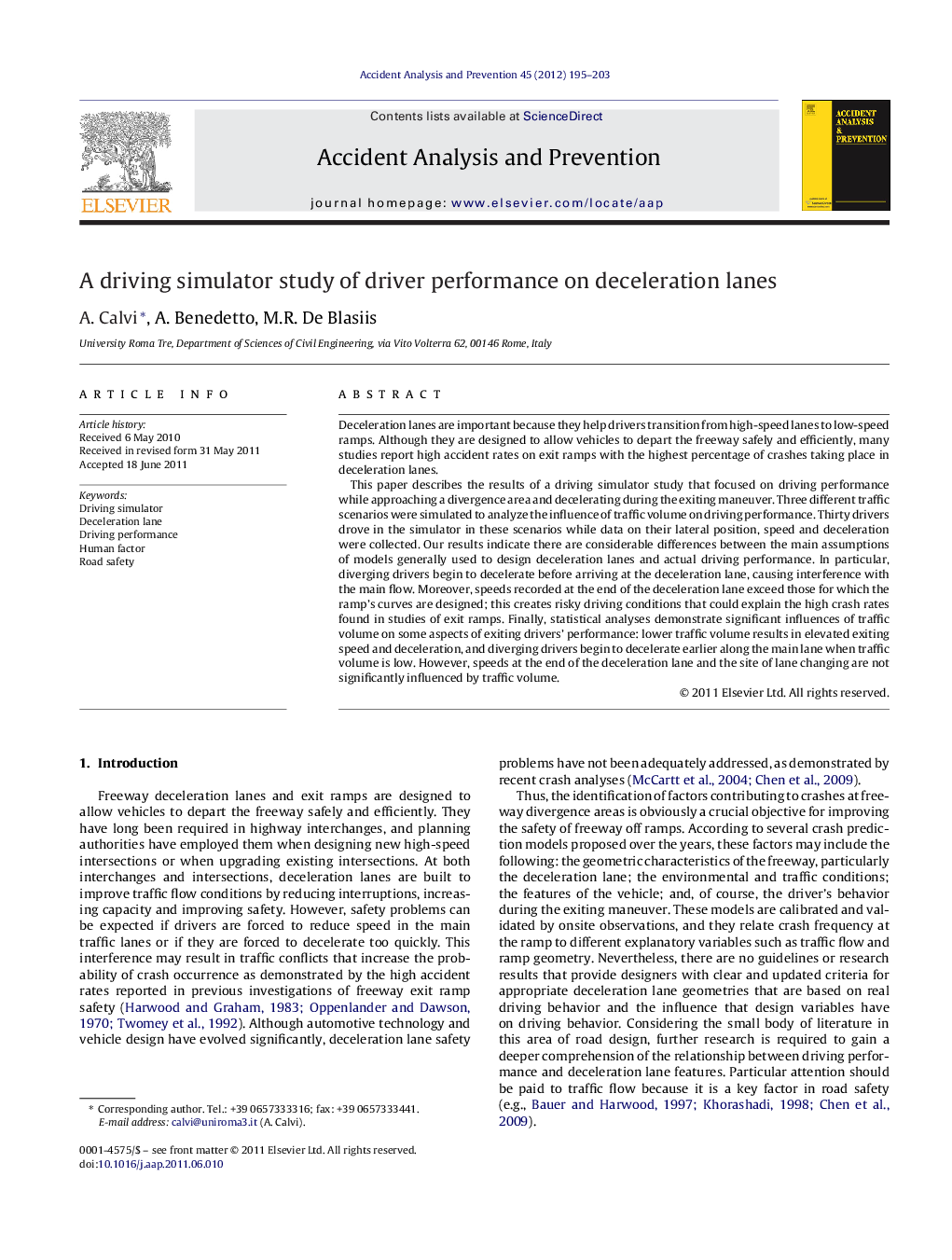| Article ID | Journal | Published Year | Pages | File Type |
|---|---|---|---|---|
| 6967145 | Accident Analysis & Prevention | 2012 | 9 Pages |
Abstract
This paper describes the results of a driving simulator study that focused on driving performance while approaching a divergence area and decelerating during the exiting maneuver. Three different traffic scenarios were simulated to analyze the influence of traffic volume on driving performance. Thirty drivers drove in the simulator in these scenarios while data on their lateral position, speed and deceleration were collected. Our results indicate there are considerable differences between the main assumptions of models generally used to design deceleration lanes and actual driving performance. In particular, diverging drivers begin to decelerate before arriving at the deceleration lane, causing interference with the main flow. Moreover, speeds recorded at the end of the deceleration lane exceed those for which the ramp's curves are designed; this creates risky driving conditions that could explain the high crash rates found in studies of exit ramps. Finally, statistical analyses demonstrate significant influences of traffic volume on some aspects of exiting drivers' performance: lower traffic volume results in elevated exiting speed and deceleration, and diverging drivers begin to decelerate earlier along the main lane when traffic volume is low. However, speeds at the end of the deceleration lane and the site of lane changing are not significantly influenced by traffic volume.
Related Topics
Physical Sciences and Engineering
Chemical Engineering
Chemical Health and Safety
Authors
A. Calvi, A. Benedetto, M.R. De Blasiis,
